Perhaps French cheese is one of the most famous in the world. It is not to wonder, since there are over 1,000 types of cheese produced in France, varying between the poignant and strong blue cheese, such as the notorious Roquefort and creamy cheese such as Brie.
There are many things the French are renown for, and their cheesemaking tradition is one of them, keeping to centuries old techniques to produce top quality cheese that will be sold in fromageries and celebrated in different corners of the world.
So, how to choose one cheese from the next when the options are so many? Below we offer a list with some of the most popular French cheese. Some have been around since the times of Charlemagne, other didn't become popular until the French emperor himself, Napoleon, gave his approval.
Top 10 French Cheeses
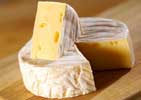
- Camembert: Like many European traditions, camembert's name comes from the village where it was created in Normandy. It's origin only dates back to the 18th century, yet despite it's youth it is one of the most popular and acclaimed French cheese. Napoleon first tasted it in 1855 and historians say he liked it so much he spread the word, which of course, could do a lot for your product's popularity. Camembert is made of cow's milk and it has a characteristic delicate texture and salty taste. It has a soft crust but its interior is soft and creamy. Best enjoyed with a French baguette and marriage with wine from Bordeaux.
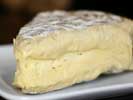
- Brie de Meaux: There are records that document Brie's existence in the times of time of Charlemagne, back in 774, when he tasted it in a little French city, Brie. Brie is often referred to as Le Roi des Fromages, which means the King of Cheese. It is also said that Louis XVI's last wish before he was executed in the French Revolution, was for a taste of brie, his favorite cheese. To make one Brie de Meaux cheese takes about 25 liters of cow's milk. It has a soft creamy texture and an almost sweet taste which reminds of certain nuts.
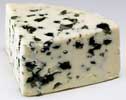
- Roquefort:
Perhaps the most ancient French cheese, Roquefort was first mentioned (that records remain) in 79 A.D. by Pliny the Elder. In his chronicle he described its rich taste. Roquefort is not loved by all as it has a very strong and poignant taste and aroma. It is more of an acquired taste, but those who love it are very loyal to it.
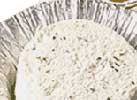
- Boursin: Boursin is delicious creamy cheese. Favorite of many chefs around the world, it is incorporated into many dishes because of its characteristic taste. Developed in 1963, it has gathered a large and loyal crown in its little more than 60 years of existence. Loved not only for its taste but also its versatility -it can be consumed with bread or added to pasta and other dishes. Sommeliers say its marriage is to a dry white wine.
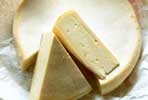
- Reblochon: Reblochon's origins dates back to the middle ages. Its name means "to pinch a cow's udders again". It may sound a little strange, but it has an explanation. During the Middle Ages some farmers from the mountains of Haute Savoie decided to outsmart the tax collectors. As their taxes were paid partly in their milk production, the farmers didn't milk the cows entirely, so they gave less in proportion. Once the tax collectors left they secretly milked their cows again. Reblochon is made with the second's day milking. It has a nutty taste, a crusty exterior and creamy interior.
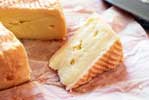
- Munster: This cow's milk French cheese's origin dates back to the Middle Ages. Produced in the region of Alsace. Initially produced by monks who were looking for a way to perpetuate their diary products. It has a strong taste and scent, though it's softer in less mature cheeses. A number of diaries in Alsace still produce Munster cheese the same centuries old way. Raw cow's milk is used and they wash the cheese's rind periodically, which contributes to its flavor and smell.
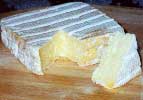
- Pont l'Eveque: Pont l'Eveque was created around the 13th century. It's original name was d d'Angelot, however it evolved to the name of the Norman village where it's produced. It is a rich cheese, produced with almost pasteurized milk with a full and salty flavor and soft texture. Presented in a square shape it is protected with an A.O.C (Appellation d'origine contrôlée).
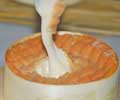
- Epoisses Original from the heart of burgundy, Epoisses was first produced by monks. It is said that it was one of Napoleon's favorite cheese. The cows are milked after freely roaming and pasturing in meadows of Burgundy for three months. The cheese is washed with salt water and then stored in a humid cellar. Three weeks later the cheese is ready and it is washed again with a mix of water and Marc de Bourgogne's distilled spirit. It as a strong and poignant smell, a rich flavor and creamy texture.
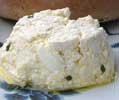
- Chèvre: Chèvre means goat. When the Saracens invaded the west of France in the 8th century they brought their goats and left them behind along with instructions of how to produce the cheese. This goat's milk cheese is acrid and rich when mature, and mild and smooth when young. Many people add Chèvre to omelets, pasta dishes, salads, as pizza toppings and cakes.
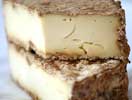
- Tomme de Savoie: Tomme means a wheel of cheese in French. The appellation tomme is generally followed by the name of the town or region where the cheese is produced. Such is the case of Tomme de Savoie, Savoie is a town from the French Alps. This cow's milk cheese is semi-firm, with a brown grind and a buttery color interior. This cheese is made with skimmed milk therefore it is quite low fat (20% - 45%), and its character depends on what the cows have fed on.









